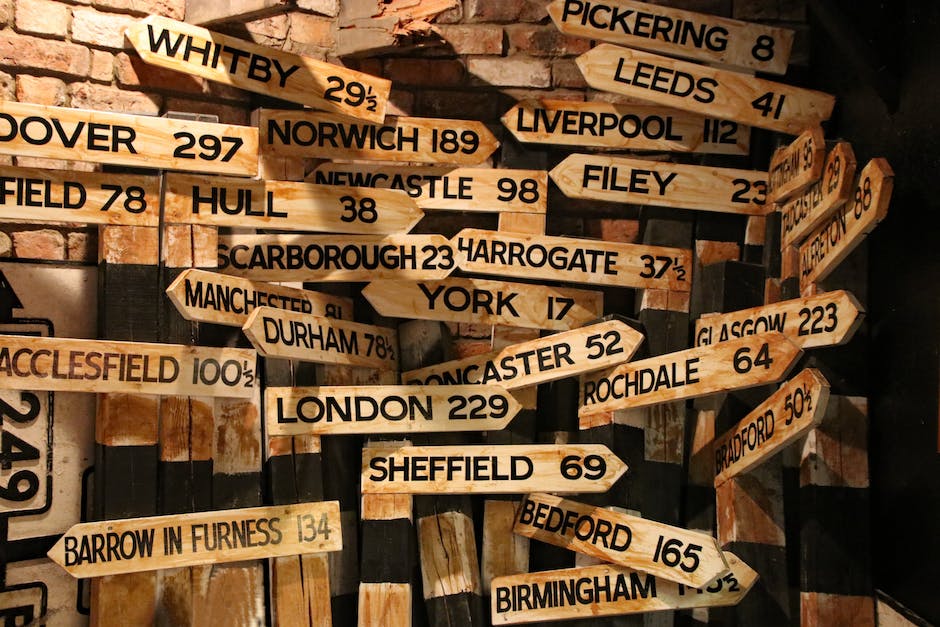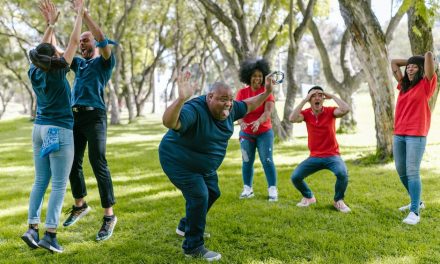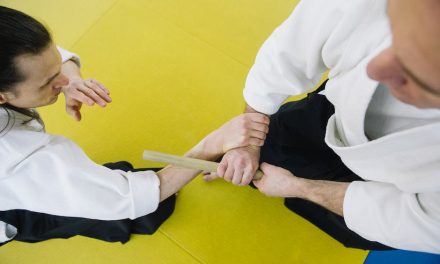Table of Contents
“Empowering minds, fostering harmony: Education for Peace, teaching conflict resolution in schools.”
Introduction
Introduction:
Education for Peace: Teaching Conflict Resolution in Schools is a program aimed at equipping students with the necessary skills and knowledge to effectively resolve conflicts and promote peaceful coexistence. By integrating conflict resolution strategies into the educational curriculum, this initiative seeks to foster a culture of peace, tolerance, and understanding among students. Through this approach, schools play a crucial role in shaping the attitudes and behaviors of future generations, ultimately contributing to a more harmonious and peaceful society.
The Importance of Teaching Conflict Resolution Skills in Schools

Education for Peace: Teaching Conflict Resolution in Schools
Conflict is an inevitable part of human interaction. Whether it is a disagreement between friends, classmates, or even nations, conflicts can arise in various settings. In order to promote a peaceful and harmonious society, it is crucial to teach conflict resolution skills from an early age. This is why teaching conflict resolution in schools is of utmost importance.
Firstly, teaching conflict resolution skills in schools helps students develop essential life skills. Conflict resolution is not just about resolving disputes; it involves effective communication, empathy, and problem-solving. By teaching students how to manage conflicts in a constructive manner, they learn how to express their thoughts and feelings assertively, listen actively, and find mutually beneficial solutions. These skills are not only valuable in resolving conflicts but also in building healthy relationships and navigating through various challenges in life.
Moreover, teaching conflict resolution in schools fosters a positive and inclusive school climate. When students are equipped with conflict resolution skills, they are more likely to handle conflicts peacefully and respectfully. This creates a safe and supportive environment where students feel heard and valued. By promoting open dialogue and understanding, schools can prevent conflicts from escalating into more serious issues such as bullying or violence. In turn, this contributes to a positive school culture that promotes empathy, tolerance, and acceptance.
Furthermore, teaching conflict resolution in schools prepares students for the complexities of the real world. In today’s globalized society, individuals are constantly exposed to diverse perspectives and opinions. By learning how to navigate conflicts in a respectful manner, students develop the ability to engage in constructive dialogue and find common ground with others. This is particularly important in a world where conflicts can arise due to differences in culture, religion, or ideology. By equipping students with conflict resolution skills, schools are empowering them to become active and responsible global citizens.
In addition, teaching conflict resolution in schools has been shown to improve academic performance. When students are constantly engaged in conflicts, it can be a major distraction from their studies. By teaching them how to effectively manage conflicts, schools can create a conducive learning environment where students can focus on their academic pursuits. Moreover, conflict resolution skills enhance critical thinking and problem-solving abilities, which are essential for academic success. Students who are skilled in conflict resolution are better equipped to handle disagreements or challenges that may arise in group projects or classroom discussions.
Lastly, teaching conflict resolution in schools has long-term benefits for society as a whole. When individuals are equipped with conflict resolution skills, they are more likely to resolve conflicts peacefully and avoid resorting to violence or aggression. This contributes to the overall reduction of violence in society and promotes a culture of peace. By teaching conflict resolution in schools, we are investing in a future generation that is capable of resolving conflicts in a peaceful and constructive manner.
In conclusion, teaching conflict resolution in schools is of utmost importance. It equips students with essential life skills, fosters a positive school climate, prepares them for the complexities of the real world, improves academic performance, and contributes to a peaceful society. By investing in conflict resolution education, we are nurturing a generation that can effectively manage conflicts and build a more harmonious and inclusive world.
Strategies for Promoting Peaceful Communication among Students
Strategies for Promoting Peaceful Communication among Students
In today’s world, where conflicts and tensions seem to be ever-present, it is crucial to equip students with the necessary skills to resolve conflicts peacefully. By teaching conflict resolution in schools, educators can play a vital role in promoting peace and fostering a harmonious learning environment. This article explores various strategies that can be employed to promote peaceful communication among students.
One effective strategy is to teach students active listening skills. Active listening involves fully focusing on and understanding what the other person is saying, without interrupting or judging. By teaching students to listen actively, they can develop empathy and gain a deeper understanding of others’ perspectives. This skill is essential in conflict resolution, as it allows students to communicate effectively and find common ground.
Another strategy is to encourage open and respectful dialogue. Creating a safe space where students feel comfortable expressing their thoughts and opinions is crucial. By promoting open dialogue, students can learn to communicate their needs and concerns without resorting to aggression or violence. Teachers can facilitate this by setting ground rules for respectful communication and modeling positive communication behaviors themselves.
Furthermore, teaching students problem-solving skills is essential for conflict resolution. By equipping students with the ability to identify problems, brainstorm solutions, and evaluate their effectiveness, they can approach conflicts with a constructive mindset. Problem-solving skills also encourage critical thinking and creativity, enabling students to find innovative solutions to conflicts.
In addition to these strategies, promoting empathy and understanding is crucial in fostering peaceful communication. Educators can incorporate activities that encourage students to put themselves in others’ shoes and consider different perspectives. By developing empathy, students can better understand the underlying causes of conflicts and work towards finding mutually beneficial solutions.
Moreover, teaching students effective communication skills is vital. This includes teaching them how to express their thoughts and feelings assertively, without resorting to aggression or passive-aggressive behavior. By teaching students to communicate assertively, they can express their needs and concerns in a respectful manner, reducing the likelihood of conflicts escalating.
Furthermore, conflict resolution can be promoted through the use of peer mediation programs. These programs involve training students to act as mediators, helping their peers resolve conflicts in a peaceful manner. Peer mediation not only empowers students to take an active role in conflict resolution but also fosters a sense of responsibility and empathy towards others.
Lastly, incorporating restorative justice practices can be highly effective in promoting peaceful communication among students. Restorative justice focuses on repairing harm caused by conflicts and restoring relationships. By involving all parties affected by a conflict in a dialogue and encouraging them to take responsibility for their actions, restorative justice promotes understanding, empathy, and forgiveness.
In conclusion, teaching conflict resolution in schools is crucial for promoting peace and creating a harmonious learning environment. By employing strategies such as teaching active listening, encouraging open dialogue, teaching problem-solving skills, promoting empathy and understanding, teaching effective communication skills, implementing peer mediation programs, and incorporating restorative justice practices, educators can equip students with the necessary skills to resolve conflicts peacefully. By fostering peaceful communication among students, we can contribute to a more peaceful and inclusive society.
Integrating Conflict Resolution into the Curriculum: Practical Approaches
Education for Peace: Teaching Conflict Resolution in Schools
Conflict is an inevitable part of human interaction, and learning how to resolve conflicts peacefully is a crucial life skill. Recognizing the importance of teaching conflict resolution, many schools have started integrating it into their curriculum. This article explores practical approaches to integrating conflict resolution into the curriculum, highlighting the benefits and challenges of such an endeavor.
One practical approach to integrating conflict resolution into the curriculum is through the use of literature. Reading books that depict characters facing conflicts and resolving them peacefully can provide students with valuable insights and strategies. By analyzing these stories, students can learn empathy, perspective-taking, and problem-solving skills. Additionally, discussing the conflicts in literature can help students understand the complexities of real-life conflicts and the importance of finding peaceful resolutions.
Another effective approach is the use of role-playing activities. Role-playing allows students to step into the shoes of different characters and experience conflicts from various perspectives. By engaging in these activities, students can develop their communication and negotiation skills. They learn to express their needs and concerns assertively while also listening actively to others. Role-playing also helps students understand the consequences of their actions and the importance of compromise in resolving conflicts.
Incorporating conflict resolution into subjects like social studies and history is another practical approach. These subjects provide opportunities to explore conflicts from different time periods and cultures. By studying historical conflicts, students can gain a deeper understanding of the causes and consequences of conflicts. They can also analyze the strategies used to resolve conflicts and evaluate their effectiveness. This approach not only enhances students’ knowledge of history but also fosters critical thinking and problem-solving skills.
Furthermore, schools can establish peer mediation programs to empower students to resolve conflicts among their peers. Peer mediation involves trained students acting as mediators to help their peers find mutually acceptable solutions. This approach not only promotes a sense of responsibility and leadership among students but also creates a supportive and inclusive school environment. Peer mediation programs have been shown to reduce bullying and improve overall school climate.
However, integrating conflict resolution into the curriculum is not without its challenges. One major challenge is the lack of time and resources. Schools already have a packed curriculum, and finding time to teach conflict resolution can be difficult. Additionally, training teachers to effectively teach conflict resolution requires resources and professional development opportunities. Overcoming these challenges requires a commitment from school administrators and policymakers to prioritize conflict resolution education.
Another challenge is the resistance from some educators and parents who may view conflict resolution as a distraction from academic learning. However, research has shown that teaching conflict resolution not only improves social and emotional skills but also enhances academic performance. Students who can effectively resolve conflicts are better able to focus on their studies and have higher levels of engagement in the classroom.
In conclusion, integrating conflict resolution into the curriculum is a practical approach to teaching students the skills they need to resolve conflicts peacefully. Through literature, role-playing activities, subject integration, and peer mediation programs, students can develop empathy, communication, and problem-solving skills. While there are challenges to overcome, the benefits of teaching conflict resolution in schools are undeniable. By investing in conflict resolution education, we can create a more peaceful and harmonious society.
Creating a Positive School Climate through Conflict Resolution Education
Education for Peace: Teaching Conflict Resolution in Schools
In today’s world, where conflicts and disagreements are prevalent, it is crucial to equip young minds with the necessary skills to resolve conflicts peacefully. Conflict resolution education in schools plays a vital role in creating a positive school climate and fostering a peaceful society. By teaching students how to manage conflicts effectively, we can empower them to become active participants in resolving disputes and promoting harmony.
Creating a positive school climate through conflict resolution education begins with establishing a safe and inclusive learning environment. When students feel safe and supported, they are more likely to engage in open and honest discussions about conflicts. Teachers can facilitate this by promoting empathy, respect, and active listening among students. By encouraging students to understand different perspectives and appreciate diversity, we can lay the foundation for conflict resolution.
One effective approach to conflict resolution education is teaching students communication skills. Effective communication is essential for resolving conflicts peacefully. By teaching students how to express their thoughts and feelings assertively, they can avoid aggressive or passive-aggressive behaviors that often escalate conflicts. Additionally, teaching active listening skills helps students understand others’ perspectives and find common ground for resolution.
Another crucial aspect of conflict resolution education is teaching problem-solving skills. Conflict often arises from differing needs and interests, and teaching students how to identify and address these underlying issues is essential. By teaching problem-solving techniques such as brainstorming, negotiation, and compromise, students can learn to find mutually beneficial solutions. These skills not only help resolve conflicts but also empower students to become proactive problem solvers in various aspects of their lives.
Furthermore, conflict resolution education should emphasize the importance of empathy and emotional intelligence. Empathy allows students to understand and connect with others’ emotions, fostering compassion and understanding. By teaching students to recognize and manage their own emotions, they can develop emotional intelligence, which is crucial for resolving conflicts peacefully. Emotional intelligence enables students to regulate their emotions, empathize with others, and find constructive ways to address conflicts.
To ensure the effectiveness of conflict resolution education, it is essential to involve all stakeholders, including teachers, administrators, parents, and the community. Teachers should receive training and professional development opportunities to enhance their knowledge and skills in conflict resolution. Administrators should support and promote conflict resolution education by incorporating it into the school curriculum and providing necessary resources. Parents and the community can contribute by reinforcing conflict resolution skills at home and in the community, creating a consistent and supportive environment for students.
In conclusion, creating a positive school climate through conflict resolution education is crucial for fostering a peaceful society. By teaching students communication skills, problem-solving techniques, empathy, and emotional intelligence, we can empower them to resolve conflicts peacefully and become active participants in promoting harmony. Involving all stakeholders in the process ensures the effectiveness and sustainability of conflict resolution education. By investing in conflict resolution education, we invest in a future where conflicts are resolved peacefully, and peace becomes a way of life.
Q&A
1. What is Education for Peace?
Education for Peace is an approach that focuses on teaching conflict resolution skills and promoting peaceful coexistence in schools.
2. Why is teaching conflict resolution important in schools?
Teaching conflict resolution in schools is important because it equips students with the skills to peacefully resolve conflicts, promotes empathy and understanding, and helps create a positive and inclusive school environment.
3. How can conflict resolution be integrated into the curriculum?
Conflict resolution can be integrated into the curriculum through dedicated lessons, role-playing activities, peer mediation programs, and incorporating conflict resolution principles into various subjects such as social studies and language arts.
4. What are the benefits of implementing Education for Peace programs in schools?
Implementing Education for Peace programs in schools can lead to reduced violence and bullying, improved communication and problem-solving skills, increased empathy and understanding among students, and a more harmonious school community.
Conclusion
In conclusion, Education for Peace: Teaching Conflict Resolution in Schools is a crucial approach to fostering peaceful societies. By equipping students with conflict resolution skills, schools can contribute to reducing violence and promoting peaceful coexistence. This educational initiative not only empowers individuals to resolve conflicts peacefully but also cultivates empathy, understanding, and respect among students. Implementing conflict resolution programs in schools can have a long-lasting positive impact on society by nurturing a generation that values peaceful dialogue and cooperation.




